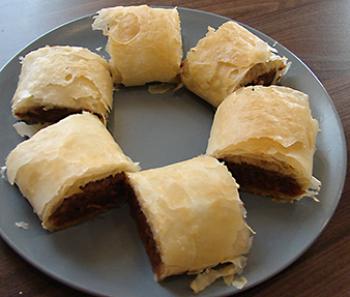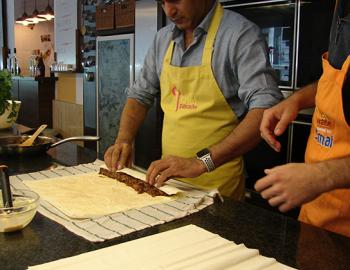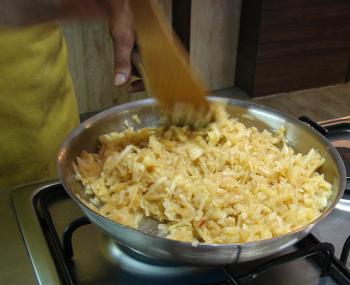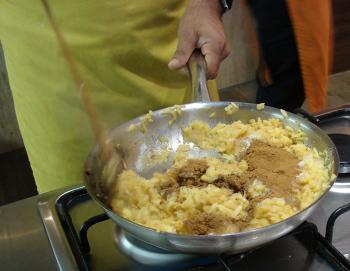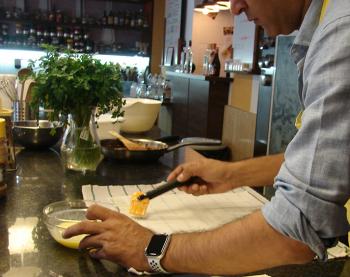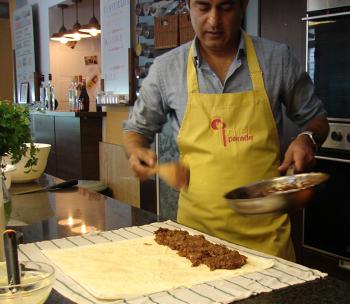What’s Cooking in… Budapest
This item appears on page 23 of the September 2021 issue.
My grandmother was a great cook. She came to America from what was once the Austro-Hungarian Empire. After she left her little Hungarian town, due to political division, it became part of Czechoslovakia, and then another political division took place, and now the town, Malý Horeš, is in Slovakia.
Through all the changes, it remained a small town of Hungarians. In fact, its name in the languages of all the governing countries was always a form of the corresponding words for “small town.” My family was fortunate that it remained small because when my aunt sent a letter to one of my grandmother’s relatives in the 1980s, the person she sent the letter to had died, but the postal person knew the family and gave them the letter.
My aunt received three responses from our Hungarian relatives asking us to visit. Even though the town was still behind the Iron Curtain, my aunt, parents, husband, son and I did, and the recipes my grandmother had made tasted the same as the food served to us by our overseas relatives. I wish I had paid more attention to my grandmother’s cooking and learned from her.
My grandmother emigrated alone at the age of 16. She had no written recipes and no concept of measurements. I once asked her, “How much salt?” She paused and replied, “About a cup, I think.”
During a visit to Budapest, Hungary, in October 2019, I took a cooking class with the Chefparade Cooking School (Budapest; phone +36 20 316 1876, cookingbudapest.com). One of the three recipes we made was Apple Strudel.
I remember my grandmother telling me, “A good wife must be able to roll the dough so thin, she can read the newspaper through it!”
I was surprised that the recipe called for phyllo dough. Not exactly the same, my grandmother’s strudel dough was softer and not so flaky, but substituting phyllo makes it easier for people to prepare, so more people can enjoy this wonderful, tasty dessert.
It had been decades since I had the pleasure of eating my grandmother’s strudel, but the one we made during the cooking class was excellent.
Sandra Scott can be reached by email at [email protected].
4 large apples
½ cup sugar (more if apples are very tart)
1 tbsp cinnamon (or to taste)
½ cup butter
4 sheets of phyllo dough
½ cup melted butter
¼ cup bread crumbs
1 sheet baking paper (optional)
Preheat oven to 350°F. Peel and core apples and grate them into a bowl. Squeeze to remove excess juice, if necessary. Melt ½ cup butter in frying pan. Add apples, and sauté for about 5 minutes. Sprinkle with cinnamon and sugar and continue to cook until apples are soft.
Dampen a clean dish towel and spread it out on the countertop. Place one layer of phyllo dough on the towel and brush with melted butter. Repeat three more times. Sprinkle the bread crumbs on the top sheet and cover with apple mixture. Roll up the pastry from the longest edge and pinch the ends tight. Line baking sheet with baking paper or spray with nonstick spray. Place the roll, seam-side down, on baking sheet and brush with melted butter. Bake 20 minutes.
Apples can be replaced with other items, such as cherries or cranberries. A savory strudel can be made with cabbage, cottage cheese or pumpkin.

